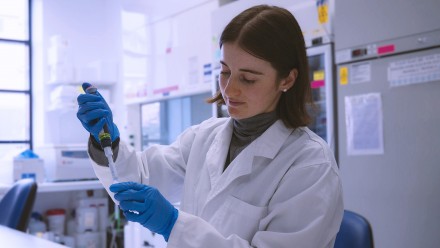Associate Professor Charani Ranasinghe

Contacts
Areas of expertise
- Infectious Diseases
- Cellular Immunology
- Immunology
- Medical Molecular Engineering Of Nucleic Acids And Proteins
- Cellular Interactions (Incl. Adhesion, Matrix, Cell Wall)
- Medical Virology
- Immunology
Funding 2010 - 2016
Past and Current Funding
- NH&MRC Project grant
- 2 x NH&MRC Development grants
- Bill & Melinda Gates Foundation, Grand Challenge Exploration Phase I
- 5 Australian Centre for HIV & Hepatitis Virology Research grants
- 3 x Gordon and Gretel Bootes Foundation awards.
- Commercial funding
- 2 DTF grants
Research interests
Since all HIV-1 'systemic vaccine trials' in humans have elicited poor outcomes, there is now an increased awareness of the potential importance of inducing local antiviral immune responses at 'mucosal surfaces', particularly in the genital and rectal tissues, the cervico-vaginal tissues in females where the virus is usually first encountered, and in the gastro-intestinal tract, which appears to be a major site of virus replication. It is now widely accepted that, purely systemic immunisation strategies for example; intramuscular, intravenous although inducing good systemic T cell responses rarely induce optimal sustained mucosal T or B cell immunity. It has been shown that a direct mucosal application of a vaccine is necessary to induce sustained mucosal immunity. Furthermore, we have shown that the mucosal vaccination can induce better quality CD8+ T cells (T cells of higher avidity) compared to systemic vaccination. Therefore, in our laboratory we are currently evaluating the efficacy of new-generation of pox virus HIV vaccines that could be delivered intra nasally, orally, and/or systemically, that could enhance the magnitude, cytokine profile as well as the avidity of both mucosal and systemic CD8+ T cells. Several immunological and molecular techniques such as ELISpot, intracellular cytokine staining, tetramer staining and PCR based assays have been developed in our laboratory to assess the immune responses to vaccine antigens. Our laboratory is mainly focused on 1. Evaluating the quality of HIV specific mucosal and systemic T cells generated by prime boost vaccination. In order to achieve this, profiling of mucosal and systemic T cells are being performed in the laboratory. 2. Understanding the molecular mechanisms governing the induction of high avidity CD8+ T cells following mucosal prime boost vaccination. 3. Identifying novel molecules (i.e. cytokines, chemokines) that could be utilised as molecular markers to measure mucosal immune responses to vaccine antigens. 4. Identifying novel molecular adjuvants to enhance mucosal immuneF responses to vaccine antigens.
Groups
- Ranasinghe C, Turner SJ, McArthur C et al. (2007) Mucosal HIV-1 pox virus prime-boost immunization Induces high-avidity CD8+ T cells with regime-dependent cytokine/granzyme B profiles. J Immunol. 178(4), 2370-2379.
- Ranasinghe C, Trivedi S, Stambas J, Jackson RJ (2013) Unique IL-13Ralpha2-based HIV-1 vaccine strategy to enhance mucosal immunity, CD8(+) T-cell avidity and protective immunity. Mucosal Immunol 6: 1068-1080.
-
Jackson RJ, Worley M, Trivedi S, Ranasinghe C (2014) Novel HIV IL-4R antagonist vaccine strategy can induce both high avidity CD8 T and B cell immunity with greater protective efficacy. Vaccine Vaccine 32: 5703–5714.
- Ranasinghe C, Trivedi S, Wijesundara DK, Jackson RJ: IL-4 and IL-13 receptors: Roles in immunity and powerful vaccine adjuvants. Cytokine Growth Factor Rev 23(14), 00072-00070 (2014).
- Trivedi S, Jackson RJ, Ranasinghe C (2014). Different HIV pox viral vector-based vaccines and adjuvants can induce unique antigen presenting cells that modulate CD8 T cell avidity. Virology 468-470C, 479-489.







